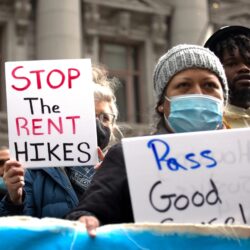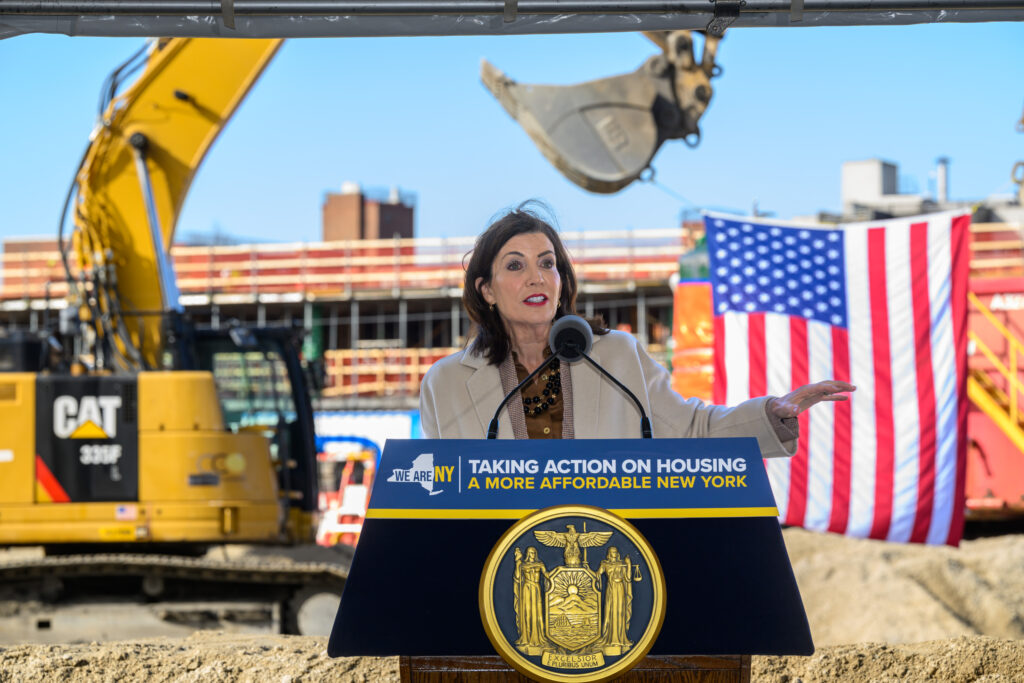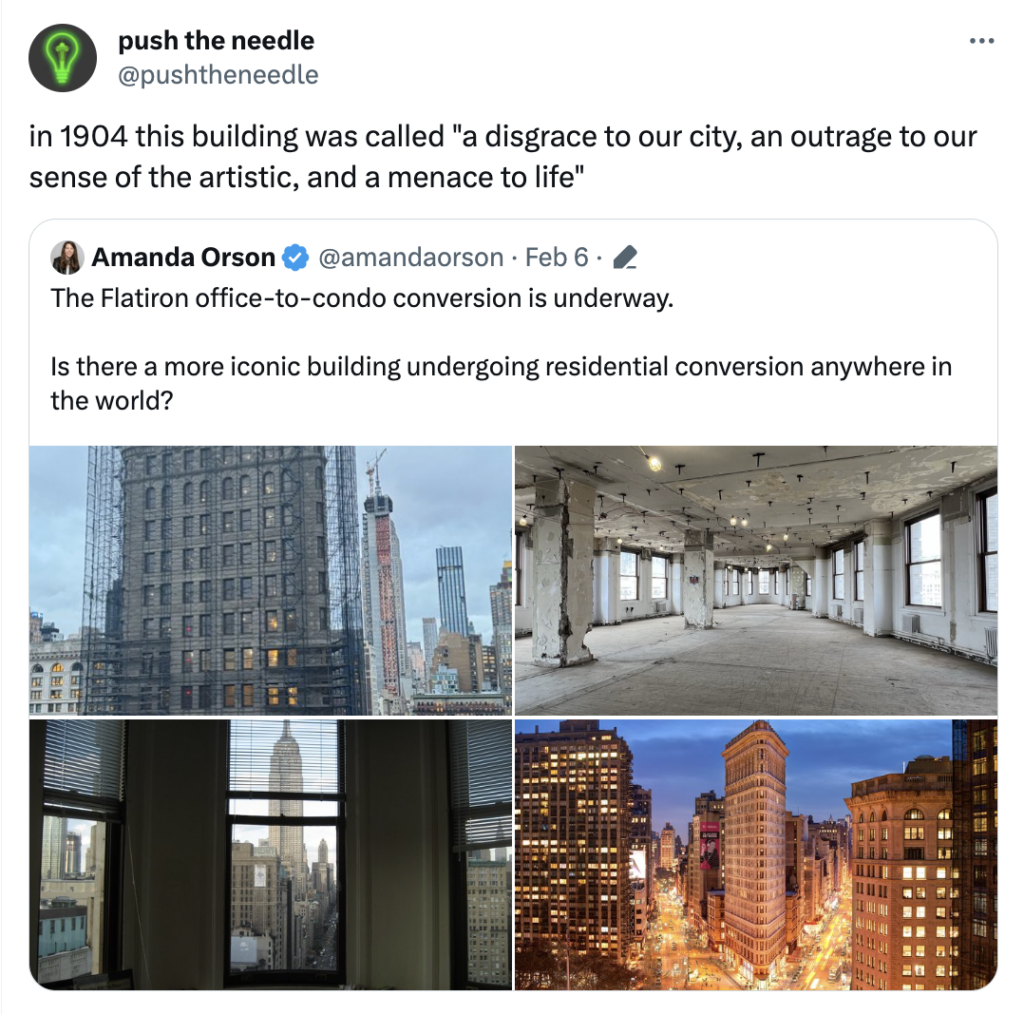
Brooklyn Space February 14, 2024

Photo: Josh Fields via Pexels
New York City’s Housing Crunch Is the Worst It Has Been in Over 50 Years
Only 1.4% of the city’s rentals were available in 2023, according to new data, the lowest portion since 1968. The market was even tighter for lower-cost apartments, according to city data released last week. It was the lowest vacancy rate since 1968 and shows just how drastically home construction lags behind the demand from people who want to live in the city. Housing experts often consider a “healthy” vacancy rate to be somewhere around 5 to 8%. A higher vacancy rate typically means it is easier for people to find apartments when they want to move. It also means that property owners are more likely to have to compete for renters, conditions that would moderate rent increases.
The data suggests NewYork City’s housing crisis is only getting worse, especially during the economic rebound from the coronavirus pandemic. The 1.4 percent rate was down from 4.5 percent in 2021, the last time the survey was conducted. New York officials consider a vacancy rate of less than 5 percent a “housing emergency.” The data is clear: The demand to live in our city is far outpacing our ability to build housing,” Mayor Eric Adams said in a statement announcing the numbers on Thursday. “New Yorkers need our help, and they need it now.”
Quick Links
Skip scrolling, here are the top stories you need for today:
- Editorial: The Council’s Wait-and-see Approach Won’t Fix the City’s Current Housing Needs
- Investment Sales Drops Across Nearly All Asset Classes in Brooklyn in 2023
- Opinion: We Need to Restore the Soul of New York City
- Feds Reject City’s $800M Grant Applications to Redesign Crumbling BQE Cantilever
- Industry City Announces Three New Leases Totaling 33,496 Square Feet
Around Kings County
Hochul Tax Break Brings 18 Gowanus Projects “Back From The Dead”
Governor grants 421a alternative to developments totaling 5,300 units. Nothing promotes a new property tax break quite like a biblical zombie reference and politicians pretending to shovel dirt. At a groundbreaking Friday, Gov. Kathy Hochul announced that 320 and 340 Nevins Street, along with 16 other projects in Gowanus, will receive an alternative to the property tax break 421a. Hochul said the program will revive 5,300 apartments imperiled by 421a’s expiration “like Lazarus brought back from the dead.”
Editorial: The Council’s Wait-and-see Approach Won’t Fix the City’s Current Housing Needs
The old adage “Don’t cut off your nose to spite your face” comes to mind when considering the City Council’s unanimous rejection Thursday of a development proposed for Crown Heights that would have added 150 apartments, 45 of them affordable, to the Brooklyn neighborhood. As Crain’s reporter Nick Garber pointed out in his article on the initial committee vote, the council chose to side with the local member, Crystal Hudson, who called the project, to be erected on a long-vacant lot, premature given the city’s plan to rezone the block it’s proposed for along with 12others near Atlantic Avenue. The rezoning initiative still needs final council approval.
The city should finalize its Atlantic Avenue plan, and then, once it’s done, it can make sure developers adhere to it. But holding up proposals until the paperwork is finished will just keep shovels out of the ground. And during a housing crisis, all solutions should be given a fair shot. The pursuit of perfection should not torpedo the good.
Investment Sales Drops Across Nearly All Asset Classes in Brooklyn in 2023
Property sales in Brooklyn saw a major drop in 2023 compared to 2022, not only in the number of transactions but also the dollar volume, Commercial Observer has learned. Sales in 2023 reached a combined total of $5.2 billion across 1,090 transactions over the course of the year, a 45 percent drop in the dollar amount compared to 2022 and a 29 percent decrease in the transaction amount, according to TerraCRG’s annual Brooklyn market report.
Industry City Announces Three New Leases Totaling 33,496 Square Feet
Industry City, an innovation campus that spans approximately 35 acres in Sunset Park, has announced the signing of three new industrial leases spanning 33,496 square feet. Currently, home to more than 8,500 workers across more than 550 businesses ranging from small startups and solo entrepreneurs to large enterprises, the new leases were signed by Pvilion, a solar product manufacturer; CitiBin, a company that sells trash enclosures; and Highline Commerce, a growing logistics company. Highline Commerce is expanding its footprint within the campus, signing a 15,311-square-foot lease expansion from its existing 27,000-square-foot space.
Feds Reject City’s $800M Grant Applications to Redesign Crumbling BQE Cantilever
The Biden administration has rejected the city’s applications for $800 million in infrastructure grants to redesign and reconstruct the crumbling triple cantilever section of the Brooklyn-Queens Expressway, amNewYork Metro has learned. The Federal Highway Administration (FHWA) rebuffed the city Department of Transportation’s (DOT) applications for grants under the Biden administration’s Infra and Mega programs last month, potentially imperiling the Adams administration’s hopes to redesign and rebuild the widely-maligned triple cantilever section of highway in Brooklyn Heights over the next few years. The 1940s-era highway constructed by “master builder” Robert Moses has been deteriorating for decades, and in 2020, an “expert panel” convened by former Mayor Bill de Blasio warned the cantilever could be unsafe for travel as early as 2026.
Housing Solutions From Across The Globe

Photo: Will Barkoff via Unsplash
How Did Our Housing Get So Expensive? Klarman Fellow dives into the history
Renting an apartment in a major city can be a more competitive sport than a home tour. Historian Jacob Anbinder has been through the process himself, first in New York City right out of college and later in the Boston area during graduate school. “You show up every day to look at three or four apartments, and you’re there with 20 other people, and everyone is holding their application packets with all your bank statements, and in many cases, all your parents’ bank statements, too, because you need guarantors,” said Anbinder, a Klarman Postdoctoral Fellow. “These are the people you’re competing against, and if you don’t apply right there, you’re not going to get the place. It’s crazy, the amount of money you have to put down just to rent an apartment.”
The experience inspired Anbinder, a historian with an interest in cities and strong ties to public policy, to investigate why supposedly liberal, progressive cities – such as New York, Boston and San Francisco – have become so expensive in recent decades that they are unaffordable for many Americans. In addition to economic reasons for the current housing crisis, Anbinder is finding political ones, as well, that he traces to the ideological evolution of the Democratic Party during the 20th century.
Perspectives
➤ A New Bill Could Bring ‘Social Housing’ to New York
The bill would create a state agency to build developments that would be affordable but wouldn’t rely wholly on public subsidies. The left-leaning wing of the Democratic Party has long favored rent control and eviction bans to address New York’s housing crisis. Now, progressives in the state also want to revive an old concept: let the government develop thousands of affordable homes. A bill, set to be introduced on Tuesday, would create a government agency that could build housing using its own money or money raised in the bond market. It follows similar efforts in Atlanta, Rhode Island and Montgomery County, Md., and is an acknowledgment from the left that solving the housing crisis will inevitably mean building more homes. Read more.
➤ Opinion: We Need to Restore the Soul of NewYork City
Over the past decade, there has been much hand-wringing about New York’s puzzling empty storefront problem, with vacancy rates sitting north of 15% last fall in some of the city’s most celebrated areas. How did streets, from the East to the West Village, once home to the urbanist Jane Jacobs, a champion of the city’s neighborhoods, become so hollow? Rent escalation and the shift to e-commerce are, of course, obvious culprits. But behind the scenes, an important, largely overlooked factor is New York City’s zoning code, enacted in 1961. Read more.
➤ New York Reimagined Subsidized Housing. What Happened?
Via Verde aspired to serve as a model of beautiful, sustainable subsidized housing. A decade later, a NY Times critic finds that a building can change minds, but maybe not systems. Read more.
➤ Record Number of Office-to-Apartment Conversions in2024
More than 55,000 apartments across the U.S. are scheduled for conversion from old office space this year, according to a new report. The office-to-apartment conversion trend is gathering steam and is expected to continue as weakening demand for office space and rising vacancies push the sector into oversupply in many cities. A record-breaking 55,300 projects are anticipated in 2024. The report says office conversions now represent 38% of the 147,000 apartments in future adaptive reuse projects. And the cities with the largest pipelines for these projects are Washington, D.C., New York City, Dallas, Chicago, Los Angeles, and Cleveland. Read more.
Think there’s something we should cover?
Email [email protected].
Brooklyn Space for Living, Working & Investing is produced by Eagle Urban Media.
Copyright (C) 2023 by Eagle Urban Media. All rights reserved.
Leave a Comment
Related Articles


Good Food March 8, 2024

Brooklyn Space March 6, 2024

Good Food March 1, 2024
Leave a Comment

Brooklyn Boro
View MoreNew York City’s most populous borough, Brooklyn, is home to nearly 2.6 million residents. If Brooklyn were an independent city it would be the fourth largest city in the United States. While Brooklyn has become the epitome of ‘cool and hip’ in recent years, for those that were born here, raised families here and improved communities over the years, Brooklyn has never been ‘uncool’.
The Brooklyn Daily Eagle and brooklyneagle.com cover Brooklyn 24/7 online and five days a week in print with the motto, “All Brooklyn All the Time.” With a history dating back to 1841, the Eagle is New York City’s only daily devoted exclusively to Brooklyn.
© 2024 Everything Brooklyn Media
https://brooklyneagle.com/articles/2024/02/14/brooklyn-space-february-14-2024/





